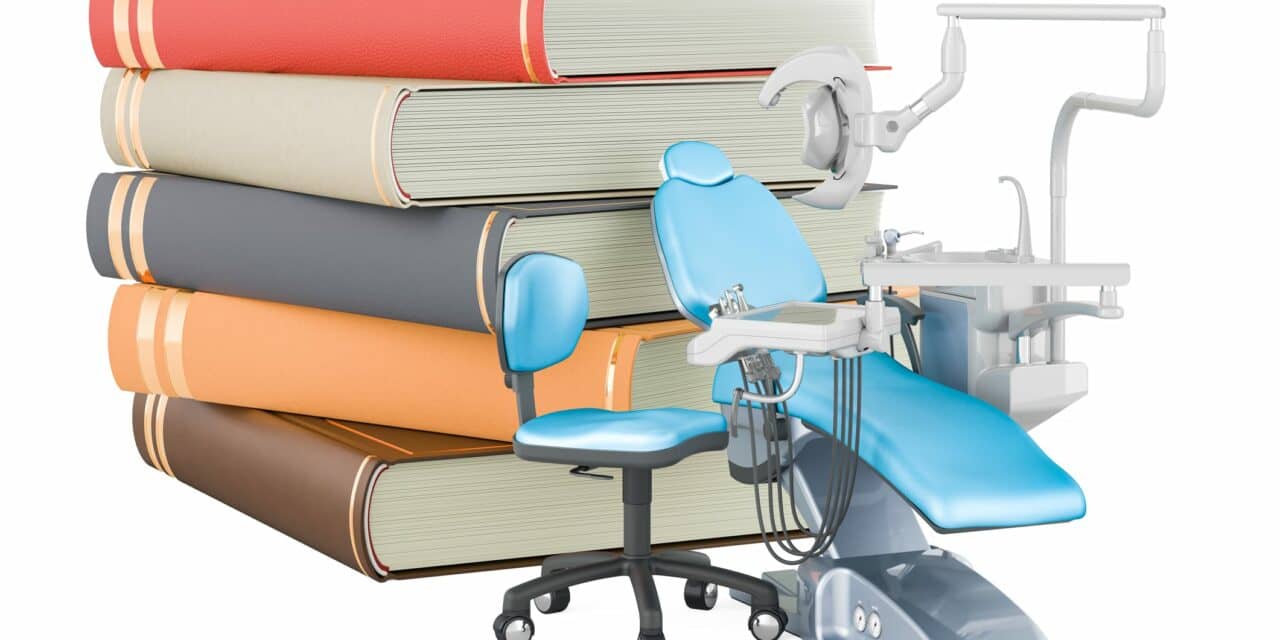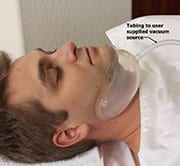By Sree Roy
CPAP-focused studies have long dominated obstructive sleep apnea (OSA) therapy research. Though oral appliances for sleep apnea showed great promise since appearing on the therapy scene in the early 1990s, physicians had to collaborate with dentists to do oral appliance studies, there was no reimbursement, the therapy did not fit the medical routine, and little government research funding was available, says W. Keith Thornton, DDS, inventor of the Thornton Adjustable Positioner (TAP). “Although some of these issues have improved recently, there is a large gap in the number of dental investigators and institutions who can do these studies,” he says.
But more peer-reviewed research studies by leading institutions are precisely what is needed to increase sleep physician prescriptions for oral appliances. Sleep physician John E. Remmers, MD, chief scientist at ProSomnus Sleep Technologies, says, “It has to start with solid unequivocal evidence from investigational leaders.”
The evidence needs to go well beyond short-term response, Remmers adds. “While we need to evaluate snoring and other symptomatic response better and in more patients, those studies aren’t going to move the needle,” he says. “I want to look at the long-term outcomes. We need answers to the major questions: If you put together the efficacy and the compliance of oral appliances, do you save lives?”
CPAP has failed in several notable instances here, providing an opportunity for oral appliances to potentially shine. Though CPAP has shown benefits in improving surrogate markers for cardiovascular events—such as lowering blood pressure—CPAP has yet to show it can prevent serious cardiovascular events such as strokes, for instance. “We believe that efforts and resources to thoroughly evaluate the potential of [oral appliances] in improving cardiovascular outcomes are urgently needed,” says one group of researchers who attribute the lack of proven long-term cardiovascular benefits of CPAP to its poor adherence.1
Another facet of long-term outcomes is the potential for neurocognitive improvements with therapy. In 2021, a pilot study showed the neurocognitive improvement of mildly impaired, geriatric patients using an oral appliance.2 The researcher has applied for a grant to further study these effects. “Certainly, this would facilitate greater adoption,” Thornton says.
A study from almost a decade ago suggests that some health outcomes in patients with obstructive sleep apnea are similar after treatment with CPAP and oral appliances.3 “This was likely explained by the greater efficacy of CPAP being offset by inferior compliance relative to oral appliance therapy,” says Jeremy R. Powers, director, global clinical affairs at SomnoMed. “These findings…still strongly challenge current practice parameters and long-term comparative effectiveness studies between CPAP and [oral appliance therapy] that include objectively measured treatment compliance are needed to better define treatment strategies for patients with OSA.”
In the present day, ProSomnus is sponsoring a study that might also show oral appliances to be noninferior to CPAP on specific measures. So far, a report from the ongoing clinical trial shows an oral appliance as a first-line treatment option has good efficacy in reducing the apnea-hypopnea index, combined with high patient adherence (which was two hours higher as compared to the average CPAP use in an intention-to-treat analysis)—resulting in comparable overall effectiveness for mandibular advancement device therapy versus CPAP. The trial also found a higher patient preference rate for the oral appliances.4
ProSomnus is also sponsoring a six-center clinical trial of the safety and effectiveness of oral appliance therapy in severe OSA. The US Food and Drug Administration (FDA)-reviewed study involves “the big academic names in sleep apnea,” Remmers says, including the Stanford Sleep Medicine Clinic, Brigham and Women’s Hospital, and Mount Sinai Integrative Sleep Center.5 “If we’re successful, the FDA will grant a change in the status of our oral appliance so it is accepted for use for severe OSA patients,” Remmers says. “That is how you can influence the sleep physicians—by showing them evidence that is new.”
Emerging oral appliance telemonitoring platforms will facilitate the collection of real-world evidence “that will allow us to be more informed about the patient’s care, help support looking at national and international health trends, demonstrate the treatment effectiveness/adherence of therapy, be able to look at healthcare equity, capture patients reported measures/outcomes (remotely), support reimbursement, and decision-making public health policies,” Powers says.
For TAP inventor Thornton, he thinks the variety of oral appliances available spurs misleading research outcomes. “CPAP machines and therapy are relatively standard across all manufacturers. All research on CPAP therapy is therefore ‘generic.’ Not so with oral appliances since there are hundreds of designs and various protocols with each,” he says. “Once a specific design or designs were identified as having the most success, then future studies could be focused on these.”
For example, most sleep physicians and dentists think of “boil-and-bite” appliances as less effective than custom oral appliances. This is despite evidence showing the thermoplastic myTAP is noninferior to a custom appliance.6 “The device is now being fit by dentists, sleep professionals, and patients themselves. This provides the opportunity to standardize therapy so that it could be a more universal option,” Thornton says. “Studies need to be done on all aspects of its use including success in treating OSA, upper airway resistance syndrome, snoring, excessive daytime sleepiness, and short- and long-term morbidity compared to a custom device.”
Ultimately, if the hard evidence in favor of oral appliances grows—which we won’t know until many more studies are done—sleep apnea therapy clinical guidelines, such as those published by the American Academy of Sleep Medicine, must change to influence sleep physician behavior. Answers, in particular, are needed about sleep apnea phenotyping and endotyping. That way, clinicians could identify the right therapy at the right time for that patient, says SomnoMed’s Powers. “That’s the ultimate goal, in my opinion, for the sleep field,” he says.
References
- Dissanayake HU, Colpani JT,Sutherland K, et al. Obstructive sleep apnea therapy for cardiovascular risk reduction—Time for a rethink? Clin Cardiol. 2021;1-10.
- Schramm P, Das N, Schneiderman E, et al. Snoring remediation with oral appliance therapy potentially reverses cognitive impairment: an intervention controlled pilot study. Geriatrics (Basel). 2021 Nov 1;6(4):107.
- Sutherland K, Phillips CL, Cistulli PA. Efficacy versus effectiveness in the treatment of obstructive sleep apnea: CPAP and oral appliances. JDSM. 2015;2(4):175–81.
- Dieltjens M, Charkhandeh S, Bossche KV, et al. Comparison of clinical effectiveness and patients’ preference for two non-invasive treatment options for patients diagnosed with moderate to severe obstructive sleep apnea: the FLOSAT study. JDSM. 2023 May;10.2:Abstract #008.
- Safety and effectiveness of the ProSomnus EVO Sleep and Snore Device for the treatment of severe OSA. ClinicalTrials.gov Identifier: NCT05445869. 2022 July 6.
- Bosschieter PFN, Uniken Venema JAM, Vonk PE, et al. Equal effect of a noncustom vs a custom mandibular advancement device in treatment of obstructive sleep apnea. J Clin Sleep Med. 2022 Sep 1;18(9):2155-65.
Illustration 272595664 © Alexlmx | Dreamstime.com



